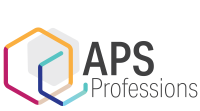Find out what it’s like to work as a senior business analyst in the Australian Public Service.
Catherine from the Australian Financial Security Authority (AFSA) shares a day in the life as a senior business analyst.
Contents
An accidental start
I fell into business analysis by accident. I was originally going to become an accountant but I happened to work for a company who were upgrading their systems and was asked to validate and test these systems. I enjoyed the various aspects of understanding a business process, understanding how it is going to be used and seeing whether it does everything it should do. I wanted to learn more about this, so I studied a graduate diploma in system analysis and design. Once I graduated, I worked in Singapore and then moved to Australia. I worked for a software company for a number of years and then worked on and off as a contractor in both the private and public sectors.
Joining the APS as a business analyst
About a year ago, I joined AFSA as a senior business analyst. I’m part of the business applications team that looks after our existing systems, but I have been working with the Service Design Authority which oversees the Future AFSA transformation program. My role has been to document the business requirements for the agency’s service streams. I also assisted with the preparation of a Request for Quote which was released to industry to procure implementation services. Currently, I am working on refining requirements with stakeholders, documenting business rules and mapping business processes.
Business process mapping in a nutshell
Business process maps look like workflows. You’ve seen diagrams with a series of boxes that are all named and joined by arrows. These diagrams break down business processes step by step. For example, say if you want to apply for a loan with a bank. The first step would be to provide details of who you are. The second step would be to provide details of the assets that you have and what your financial situation is. The next step would be for the bank to review the application and decide whether you're creditworthy and if they’ll lend you money and how much. Then, the bank would make you an offer. You’d receive the offer and decide whether or not you're going to accept it or go to another bank. So, all these steps would be shown in the business process map, as well as the interactions between different types of users and the solution.
Variety and innovative thinking
I like being able to use many different skills such as communicating with people of different business and/or technical backgrounds and writing simply so that the requirements are specific and clear. I also like the challenge of resolving problems, working out how to meet legal and business requirements. This requires the ability to think outside of the box, which I enjoy. I’m also interested in improving processes and making things easier for people. Having empathy for people is critical. I am interested in making clients’ lives easier.
Efficiency and adaptation
In my role, it is really important to be efficient with the resources and time you have so you end up with the right result. It is also essential to be able to adapt quickly as priorities change over time.
Managing uncertainty
Around two years ago, I worked for the Queensland state government when new legislation was implemented. This legislation changed the type of permits people could apply for and changed the rules that they had to comply with. Some of the legislation had not been drafted yet, so we worked with the policy team to understand how the changes to legislation would impact the system and business processes and understand what was needed to meet the requirements in those new acts.
For that project, I documented the business requirements by writing user stories and acceptance criteria and mapped the business processes, so that the technical team could build the solution. I was also involved in helping users transition to the new functionality and helped testers verify and validate the solution. This project has been live from 2020. The system went live, and the number of online applications grew from month to month with no issues reported. It was quite satisfying to see words on a page and process maps become an actual solution in a production environment!
Lifelong learning
If you are interested in a career in business analysis, or if you are just starting out, my advice is to learn and keep learning. You never know everything and there is always something new to learn.
In our profession, we can obtain methodology and technical advice from the International Institute of Business Analysis (IIBA). The IIBA has several certification programs that you can undertake. We also have a reference guide called the Business Analysis Book of Knowledge (BABOK) which provides information on how to perform various tasks and what techniques to use.
A growing demand for business analysis
Over the past ten years, the demand for business analysis has grown significantly. New types of roles within the profession have also emerged such as business data analysis. Business data analysis is in high demand, and you can become certified in that through the IIBA.
All views expressed are personal views of the author and do not necessarily reflect the view of the department or agency.
Interested in becoming a senior business analyst?
Learn more about the skills, and how to upskill to be a senior business analyst on APS Career Pathfinder.
Role related resources
Business Analysis Body of Knowledge (BABOK)
International Institute of Business Analysis (IIBA) Business Analyst Career Road Map
